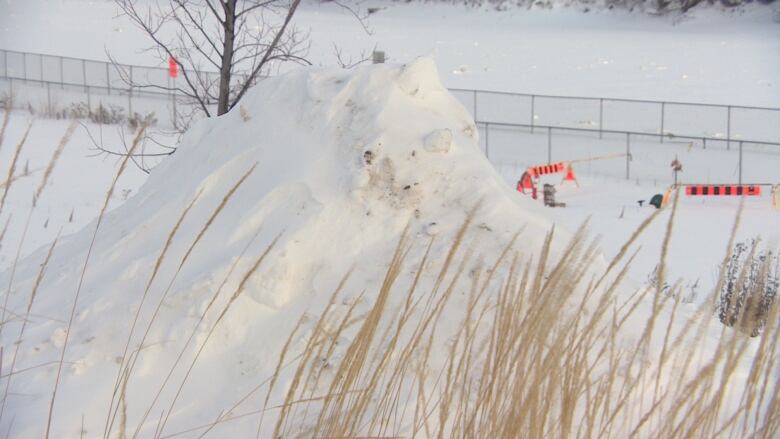Don't trade that snow shovel for a sandbag-filler just yet
Winter snowpack just one factor in determining spring flood risk, forecasters say
The deep winter snowpack in southern Manitobadoesn't necessarily doom the province to a spring flood, say flood forecasters who are nonetheless keeping a close eye on the Red and Assiniboine river basins.
The second-snowiest December on record has covered southern Manitoba with a deep blanket of snow, totalling 45 centimetres at Winnipeg as of Jan. 3, according to the meteorologist-run Winnipeg Weather blog.
There was less snow on the ground at the Manitoba capital on the same date in 2011, 2009 and 2006, all of which turned out to be significant flood years. But flood forecasters say winter snow depth alone is a poor predictor of spring flooding.
"There are a whole bunch of factors. It's very early going yet," said University of Manitobacivil engineering professor Jay Doering, who's also one of the university's associate vice-presidents.

In December, the combination of extremely wet soil-moisture conditions, above-normal water levels and a snowy winter forecast led Manitoba Infrastructure's hydrologic forecast centre to state there is a "probable chance of moderate to major flooding at some locations" in southern Manitoba this spring.
Doeringsays he believes it's too soon to sound the flooding alarm, even though some flooding factors are present.
"We still have January, February and March. We have to see how that thaw progresses. We have to see how much precipitation we get," he said.
"Let's stay hopeful that we have a gradual melt and we don't continue to have a lot of significant additional precipitation, either over the course of the winter or in the spring."
Doering saidsouthern Manitoba has experienced years when heavy winter snow translated into no appreciable spring flooding. For example, he said there was no significantfloodingduring the spring of 1910, which followed the snowiest December on record.
No panic in NoDak
Upstream from Winnipeg, the U.S. National Weather Service in Grand Forks, N.D. says it's too soon to predict a major spring flood on the Red River. This is in spite of a snowpack at Grand Forks that's nearly twice as deep as the average for this time of year, said Mike Lukes, a hydrologist for the weather service.
After two dry El Nino winters, the Red River Valley is experiencing the effects of La Nina, he said.
"We're going to see the storm path impact our area more than it has the last two years. So I think we're going to have a normal flood season or a little bit higher, bar disaster," Lukessaid in a telephone interview.
Doering said there may be more of a concern along the Assiniboine River basin. In its December report, Manitoba's flood forecasters say they're keeping an eye on the Red, the Assiniboine and the latter'stwo major tributaries, the Souris and Qu'Appelle rivers.

The Assiniboine River, meanwhile, experienced a one-in-300-year flood in 2011, the year when the province created an emergency outflow through a dike breach at Hoop and Holler Bend, southeast of Portage la Prairie.
- Flood 2009 already Manitoba's third worst in 100 years: officials
- Water flows through Manitoba dike breach
While the province said in December it's keeping an eye on both basins, it also tempered its forecast with a warning that the spring remains months away.
"It is important to note that while the conditions in this report may appear alarming in some areas, it still very early in the season and many things can happen before spring runoff actually occurs," the hydrologic forecast centre stated.
The next provincial flood outlook will be issued in February, Manitoba Infrastructure spokesman Paul White stated via email.
Floodfactors
Soil moisture at freeze-up: Saturated ground can absorb less spring runoff.
Winter precipitation: It's not just how much snow, but how much moisture is in the snow.
Lake and river levels: High water lowers the capacity to handle runoff.
Frost depth: Runoff flows over frozen earth, instead of into it.
Rate of snowmelt: A gradual melt can drastically reducethe flood risk.
Spring rain or snow: A big storm in the middle of the melt can spell disaster.
(Sources: Manitoba Infrastructure, U.S. National Weather Service)













_(720p).jpg)


 OFFICIAL HD MUSIC VIDEO.jpg)
.jpg)



























































































